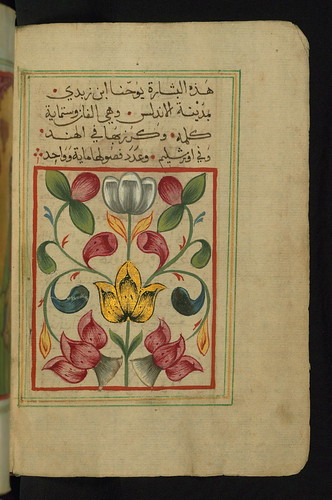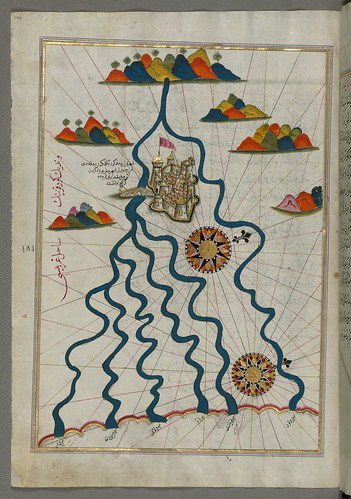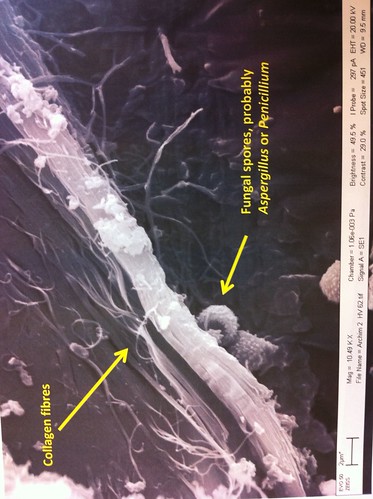
Illuminated Manuscript Poem in Honor of the Prophet Muhammad, Walters Art Museum Ms. W.582, fol.14b, originally uploaded by Walters Art Museum Illuminated Manuscripts.
A beautifully calligraphed and illuminated small codex containing the famous poem in honor of the prophet Muhammad, popularly known as Qaṣīdat al-Burdah (“The poem of the Mantle”), composed by Sharaf al-Dīn Muḥammad al-Būṣīrī (d.694 AH / 1294 CE) and executed in a number of scripts, probably in Iran, by Ḥabīb Allāh ibn Dūst Muḥammad al-Khwārizmī in the 11th AH / 17th CE century.
See this manuscript page by page at the Walters Art Museum website:
art.thewalters.org/viewwoa.aspx?id=23935

































